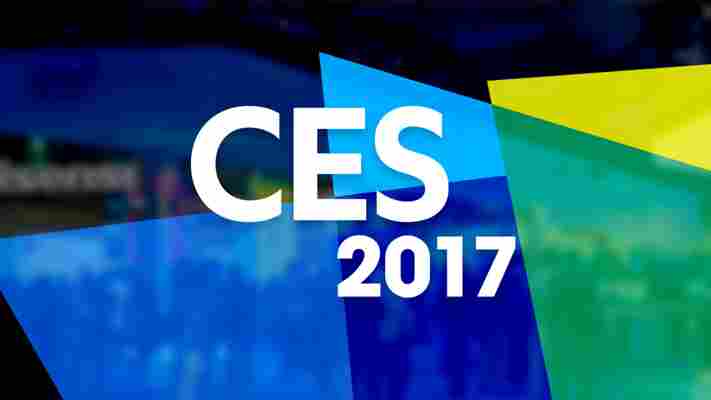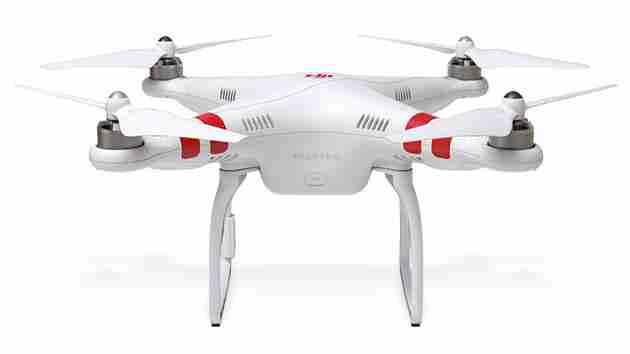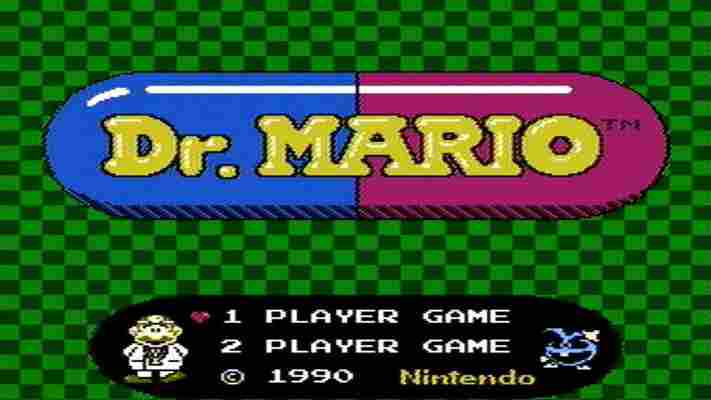CES is the world’s biggest tech event. With nearly 200,000 attendees flooding into the Las Vegas strip for a week, the conference shines a light on much of gear we’ll be using over the years to come.

We’ll be on the field covering all the biggest announcements, weird gadgets and cool new tech at the event. Here are some of the trends you can expect – and some to ignore. That said, keep in mind some of the best thing about CES are the things none of us could predict.
Televisions are CES’ bread and butter – the event practically defines every model to be released over the coming year. While normally resolution and size have been the headline features, expect HDR playback to become standard on pretty much every new TV announced at the event.
Credit: Google
HDR support helps TVs display a much wider range of colors and brightness than in years past, but few TVs in 2016 could really push the format’s potential. 2017 will bring color and brightness to the forefront on models in all price ranges. Rumors indicate Sony might begin producing OLED TVs, and Samsung might even have an all-new display technology in store.
That said, we’re likely to some 8K displays as well – we’re not complaining.
Virtual reality is in a weird place right now; everyone knows what it is – that it’s the next big thing – but few have actually experienced it. That’s because experiences have been limited to cheap gimmicky headsets or expensive premium experiences requiring powerful PCs.
We’ll start to see more standalone VR experiences at CES – we’ve already been pitched a few. These might serve as personal home theaters so that you can watch movies on an IMAX sized screen from the comfort of your bedroom.
On the other hand, HTC is rumored to be unveiling its newest updates to its Vive headset, so expect the high boundaries to be pushed as well.
It’s pretty hard to find bad headphones nowadays, but the problem is that even the world’s best headphones still sound like headphones , with the sound mainly stuck inside your noggin.
In part thanks the advent of virtual reality, companies have been paying more attention to proper spatial audio (Dolby’s Atmos and Sennheiser’s AMBEO technology, for instance). These technologies are able to imitate cues your brain use for locating sounds, and can help headphones sound even more realistic than the best surround sound setups.
Similarly, we’ll see improvements in integrated digital signal processors and sound cards for processing spatial audio.
Smartwatches haven’t done too well. The most successful smartwatch – the Apple Watch – often feels like an afterthought compared to our phones, laptops, and tablets. And Pebble, the Kickstarter darling, just sold to Fitbit .
But fitness trackers have survived because they serve a specific niche – and there are other niches to be filled. Baby monitors, pet trackers, and even new kinds of fitness trackers will likely all be on display.
Microsoft showed the world desktops still have plenty of room to innovate with the Surface Studio, and with VR often demanding more powerful hardware than ever, desktops have the chance at something of a renaissance.
PC manufacturers will likely be showing off all sorts of zany form factors. As we wrote back in November , the Surface Studio is likely a template for other companies to follow, and we’ll see other devices with similar stylus-ready form factors starting to show up, and maybe even their own take on the Microsoft Dial.
As for gaming systems, we’ve already seen a couple of backpack style rigs for VR. Companies may also try to fit VR-ready graphics into smaller form factors to make them a bit more palatable to users who would traditionally use a laptop. Speaking of….
With Nvidia’s Pascal and AMD’s Polaris architectures, laptops graphics are getting increasingly close to their desktop counterparts. That means more VR-ready laptops than ever, in slimmer form factors. We’ve seen this in laptops like Razer’s Blade series or Alienware’s newest trio , and more companies will be joining in on the fun.
If we’re lucky, we might even see VR ready 2-in-1 convertibles too.
If not, look out for Thunderbolt 3 graphics enclosures. Like the Razer Blade Stealth and the Core accessory, pretty much any Thunderbolt 3 laptop can get a performance boost through an external graphics card dock. Given how many USB-C enabled laptops already feature Thunderbolt 3, expect this to become more common.
Microsoft has also slowly but surely convinced the world that 2-in-1 systems are the future for mainstream Windows laptops. We saw many more convertibles last year, but expect fewer ultraportables to feature a traditional fixed hinge.
At the very least, chances are it will flip over like a Lenovo Yoga; Dell’s already jumped on board with its newest XPS 13. In the same token Microsoft’s stylus push and upcoming Creators Update means most of these convertibles will come with stylus’.
USB-C is pretty much the best connector ever, superior to the larger USB-A and smaller Micro USB in pretty much every fashion.
And while not every USB-C port is made the same – the spec can vary in transfer speeds and power delivery – the potential to power almost any device using the same tiny connector could finally rid us of the mess of varying cables we’re all used to.
We’ll see USB-C support on PC, headphones, TVs, monitors and random accessories. It’s about time a reversible port became standard.
On the wireless front, Bluetooth 5 is a pretty big deal. It quadruples the range (enough to fill a entire home) and doubles the speed (up to 2 MBps), allowing accessories to be more powerful. That means headphones with better range and sound quality, and more powerful, faster wearables.
For all the tech magic CES delivers, it’s usually fairly light on the most common gadget of all. That’s because most of the big smartphone makers reserve their announcements for their own events or next month’s Mobile World Congress.
That said, Chinese phone makers will likely have a bigger presence than in previous years. Xiaomi is slowly getting ready to enter the US market, and Huawei is looking to make a bigger mark as well. How exciting any announcements are, however, remains to be seen.
How technology flies: We used to have remote-controlled cars – now we have remote-controlled flying machines. But while drones were zipping around everywhere CES last year, we’ll be seeing drones get a lot smarter now.
DJI showed off AI tracking systems for its Phantom 3, and GoPro showed similar abilities with its compact foldeing Karma. Now other brands will have to show off their AI chops.
One of the biggest obstacles to buying a drone is the difficulty of flying them; anytime that barrier is lowered, more people will be willing to pull out their wallets.
There’s a ton more we can cover – electric vehicles, fancy washing machines, zany robots – but no amount of text will get through it all.
The cool thing about CES is that a lot of the best things aren’t the things you expect at all. Maybe there’s a cool display that catches our eye, or a clever accessory no one’s thought of.
Either way, stay tuned to TNW for more CES 2017 news. Check out our event page here , and follow us on Facebook , Twitter , Instagram , and Snapchat .
$50 off DJI Phantom 2 Drone + more top drones from TNW Deals
Aim for the clouds with TNW Deals’ amazing offers on some of the best drones on the market. Whether you’re an amateur or an expert pilot, we’ve got just the drone for you. Oh, and they make great gifts too!

Use the coupon below to get $50 off the DJI Phantom 2!
The DJI Phantom 2 is probably the most well known drone in the world. This powerful, lightweight, rugged quadcopter can fly for up to 25 minutes on a single charge, with a range of 1,000 meters using the included precision remote control. It includes advanced features like throttle locking, an integrated GPS for auto-pilot mode and altitude lock, and support for hi-resolution action cameras to capture all the action from your amazing flights.
The Phantom 2 also works with a range of accessories for aerial cinematography, including a Full HD video downlink to view your footage in real-time, iOSD attachments for on-screen flight data, and a Bluetooth Datalink tool to program precise flight paths from your iPad.
Get $50 off this feature-packed beauty using our coupon code TNWDJI50 when you order the Phantom 2 from TNW Deals , bringing the price to $629 with free shipping in the US!
➤ Get it
Ready to test-drive your first drone? The Black Hawk is ready for action, with a six-axis flight control system that makes it easy for beginners to get started, and allows experts to try more complicated maneuvers. And it doesn’t hurt that the Black Hawk looks like a stealth bomber from the future.
Use the included four-channel remote to execute simple flight patterns, flips and more, and activate the Black Hawk’s on-board camera to record high-quality HD video of your flights. Whether you’re in the market for a great drone to get started with aerial R/C toys or are looking for a great gift for flight enthusiasts aged 14 and up, you can’t do better than the Black Hawk.
Score the Black Hawk drone at TNW Deals for only $99 today, shipped free across the US. It’s also available internationally.
➤ Get it
Barely the size of your palm and light as a feather, the Snowflake drone is perfect for novice pilots to enjoy some aerial R/C action indoors or out. Fly it alone, in a fleet or race against your buddies!
The beautiful Snowflake is made of impact-resistant ABS plastic and can soar for up to seven minutes on a single quick charge. Its six-axis gyro allows for smooth flights and effortless maneuvers like tilts, flips and 360-degree rolls! Plus, its anti-collision technology and safety-protected propellers let you race in high-speed mode without having to worry about crashing into your opponents!
Outrace and out-maneuver your friends with this surprisingly capable nano-drone. Pre-order the limited edition Snowflake quadcopter from TNW Deals for just $39.99, with free shipping across the US.
➤ Get it
Looking for the next neat tech toy to add to your collection? The Extreme Micro Drone 2.0 is prepared for take-off. This compact quadrocopter is perfect for indoor and outdoor flights and complex aerial maneuvers, and can capture it all with its on-board camera!
Simply charge up the drone via USB, pick up the remote control, and pilot the Extreme Micro Drone 2.0 as far as 400 feet away and perform 360-degree flips with ease.
Order your very own Extreme Micro-Drone 2.0 from TNW Deals for just $74.99, including free international shipping!
➤ Get it
The SKEYE Nano Drone is perfect for pocket-sized fun anytime, anywhere! This tiny flying machine is easy to control and perform stunts with, for a barrel of fun that you can take with you wherever you go.
The SKEYE Nano Drone features a six-axis flight control system with three modes, for everyone from beginners to advanced pilots to experts, so you can execute simple maneuvers right out of the box and master complex ones like figures 8s and 360-flips as you go along.
Take your own SKEYE Nano Drone for a spin for just $34.99 from TNW Deals , shipped free across the US.
➤ Get it
Nintendo is considering building restaurants and medical devices, and that worries me
Any Nintendo fan worth their rupees knows that the singular focus on video games is in fact only a relatively recent development in company’s long history . Now, it looks like Nintendo might be looking to expand beyond gaming again.

As spotted by Wired UK , the company plans to update its Articles of Incorporation – a charter describing a company’s purpose, among other things – on June 29. The update highlights a variety of new waters for Nintendo:
Development, manufacturing and sale of medical devices and health devices
Development, manufacturing and sale of computer software
Management of and investment in eating establishments, stores and entertainment sites
Licensing of intellectual property rights
That sounds like a whole lot of not-gaming.
On one hand, it’s possible the company is just doing this to cover its bases, should it be forced to look at new business ventures after its poor performance the last few years.
On the other, we’re already seeing signs of this expansion in the form of a successful smartphone app and upcoming mobile games – something the company had sworn it would never do – as well as future feature-length movies .
All these things worry me , because I believe Nintendo’s specificity to the console experience is what has kept it the most innovative brand in gaming.
Still, those at least all revolve around Nintendo’s current intellectual property. It’s a much larger shift for it to get around to the “manufacturing and sale of medical devices” (no, Dr. Mario and Wii Fit don’t count).
Meanwhile, “computer software” makes it sound like the company is planning on developing regular old PC programs, not ports of Zelda. Don’t even get me started on the restaurants, although gaming-themed eateries aren’t that unusual in Japan .
Nintendo was founded in 1889 as a playing card company , before venturing into ‘love hotels,’ instant rice, toys, bowling alleys and a myriad of other things. It wasn’t until the 80s that Nintendo truly became a gaming company at heart with the release of its first home consoles, the Famicom and NES .
With the company’s future prospects depending heavily on the success of a single product, the Nintendo NX , it makes perfect sense to look at other ventures for some peace of mind.
Nintendo has increasingly struggled with the reality of its underdog position. By that I mean that Microsoft and Sony are multi-national conglomerates with their hands in a myriad of different businesses; if things don’t go right, they can just pour in money from one of their other divisions.
Nintendo doesn’t have that kind of fallback, so I get the need to build one. If it goes well, it could even mean more resources for game development. Still, the oldschool gamer inside of me can’t help but worry whether Nintendo will dilute its unique charm by expanding so far left field.
Either way, here’s to hoping the NX knocks it out of the park.
